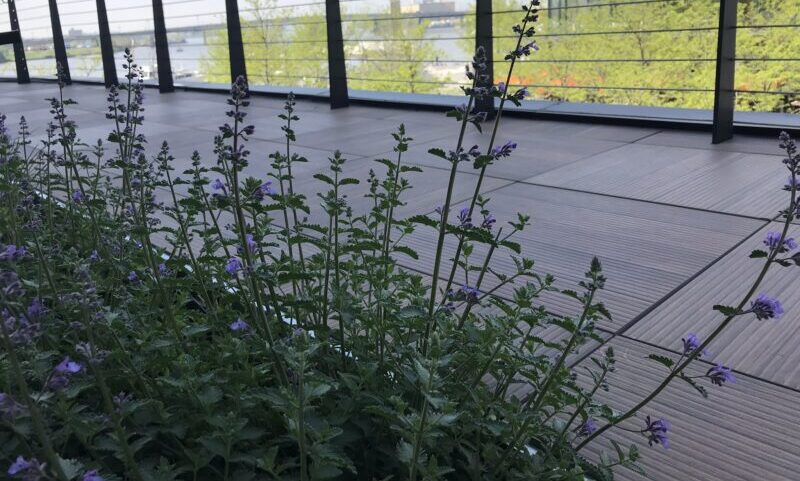Amid bustling cityscapes and concrete jungles, a touch of greenery can work wonders. Enter green roofs – a visionary solution that not only adds aesthetic appeal to urban environments but also boasts a plethora of environmental benefits. From reducing urban heat island effect to enhancing biodiversity, a green roof is a sustainable option reshaping the skyline of cities worldwide.
What is a Green Roof?
At its core, a green roof is a vegetative layer grown on top of a building’s roof. It’s not merely a matter of throwing a few potted plants up there; rather, a deliberate design incorporating various layers such as a waterproofing membrane, drainage system, growing medium, and vegetation. This intricate setup not only supports plant growth but also ensures the structural integrity of the building beneath.
The Benefits Unveiled
- Mitigating Urban Heat Island Effect
Urban areas tend to trap heat, creating what is known as the urban heat island effect. This phenomenon results in higher temperatures compared to surrounding rural areas. According to the EPA, green roofs can be 30–40°F lower than buildings with traditional roofs. Green roofs act as natural insulators, reducing the amount of heat absorbed by buildings and subsequently lowering ambient temperatures. Through the process of evapotranspiration, where plants release water vapor, green roofs actively cool the surrounding air, mitigating the heat island effect and enhancing overall comfort in urban environments.
- Improving Air Quality
Plants are nature’s air purifiers, absorbing carbon dioxide and releasing oxygen through photosynthesis. By introducing vegetation into urban spaces, green roofs contribute to improving air quality, offsetting carbon emissions, and reducing the concentration of pollutants in the atmosphere. This can have significant health benefits for urban dwellers, mitigating respiratory issues and promoting overall well-being.
- Managing Stormwater Runoff
Traditional roofs are impermeable surfaces that contribute to stormwater runoff, overwhelming drainage systems and leading to urban flooding. Green roofs, on the other hand, absorb rainwater, reducing the volume of runoff and alleviating pressure on municipal infrastructure. The layers of soil and vegetation act as natural sponges, retaining water and releasing it gradually through evaporation and transpiration, effectively managing stormwater in urban areas.
- Extending Roof Lifespan
The vegetation layer of green roofs serves as a protective shield, shielding the roof membrane from ultraviolet radiation, temperature fluctuations, and mechanical damage. By providing an additional layer of insulation and reducing thermal stress, green roofs can significantly extend the lifespan of the underlying roof structure, thereby reducing maintenance costs and enhancing the durability of buildings.
- Enhancing Biodiversity and Habitat Creation
In urban landscapes dominated by concrete and steel, green roofs offer a sanctuary for flora and fauna. From native wildflowers to pollinators like bees and butterflies, green roofs provide habitats for a diverse range of plant and animal species. By promoting biodiversity, green roofs contribute to ecosystem resilience, supporting the natural balance of urban environments and fostering a connection with nature amongst cities.
- The Road Ahead: Embracing Green Roof Technology
As we confront the challenges of climate change and rapid urbanization, the adoption of green roofs represents a proactive step towards creating more sustainable and resilient cities. Governments, architects, developers, and building owners have a crucial role to play in promoting and incentivizing the implementation of green roof technology.
Municipal policies and building codes can be updated to encourage or mandate the integration of green roofs in new construction and retrofit projects. Financial incentives such as tax breaks, grants, or subsidies can offset the initial costs associated with installing green roofs, making them more accessible to a wider range of stakeholders.
Furthermore, research and innovation in green roof technology are essential to optimize performance, reduce costs, and expand the range of applications. From modular systems to advanced irrigation techniques, ongoing advancements in green roof technology hold the promise of making these sustainable solutions even more efficient and scalable in the years to come.
In the quest for sustainable urban development, green roofs emerge as a beacon of hope, offering a harmonious blend of environmental, social, and economic benefits. Beyond their visual appeal, green roofs represent a tangible solution to some of the most pressing challenges facing our cities today – from climate change mitigation to biodiversity conservation.
As we look towards the future, let us embrace the transformative potential of green roofs and cultivate a greener, more resilient urban landscape for generations to come. By harnessing the power of nature atop our buildings, we can pave the way towards a more sustainable and vibrant future for our cities and communities.

